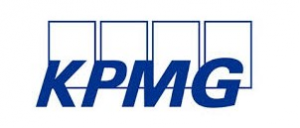Why should you review the specification of your community (EU) trademarks?
8.03.2016Company: DLA Piper Prague LLP
The modification of the EU Trademark Regulation is coming to force on 23 March 2016. It brings number of visible but not commercially important changes.
For example, if you also find the currently used terms "Office for Harmonization in the Internal Market" (OHIM) or "Community Trade Mark" (CTM) slightly confusing, you will be glad to learn that they will be replaced by "European Union Intellectual Property Office" (EUIPO) and "European Union Trade Marks" (EUTM).
However, one change is material and it could affect also your business in case your existing community (EU) trademark specification refers only to the heading or general terms according to the so called Nice classification. In such event, only those goods and services, which are covered by the meaning of such heading or general term, will enjoy the protection.
This change aims to bring more clarity and precision among the trademark registrations in order to "enable the competent authorities and economic operators, on that sole basis, to determine the extent of the protection sought".[1]
Implications
What does the above-mentioned new wording of the Article 28(2) of the Regulation exactly mean, does this change actually matter?
Well, it does because unless you specify your EU trademark by a written declaration filed with the EU Intellectual Property Office, its scope (and thereby also its value) could be significantly reduced. This window of opportunity will be opened on 23 March 2016 and it will cease to exist on 24 September 2016.
This grace period applies only to those trademarks, which were applied for prior to 22 June 2012.
In the declaration, you may choose from the existing alphabetical list of goods and services those, for which you intended to seek the protection beyond the ones covered by the pure literal meaning of the class heading.
Action necessary
You may view this change as another unnecessary obstacle to your business but also as a unique chance to review your EU trademark portfolio and clarify their specifications. Should you fail to do so and let the grace period expire in vein, the scope of your trademarks will automatically be limited to cover the goods and services described only in their class heading. And that would be a pity, wouldn't it?
It is essential for all owners of the affected EU trade marks to take action within the grace period. Better be safe than sorry. That is why we recommend auditing your trade mark portfolio to check whether you have used class headings in their specifications and whether a declaration can and should be made.
Stanislav Bednář
Attorney
DLA Piper Prague LLP
[1] Regulation (EU) 2015/2424 of the European Parliament and of the Council amending Council Regulation (EC) No 40/94 on the Community trade mark.
[2] See recital no. 25 of the Regulation (EU) 2015/2424 and new wording of the Article 28(2) of the Regulation (EC) No 40/94.
.







